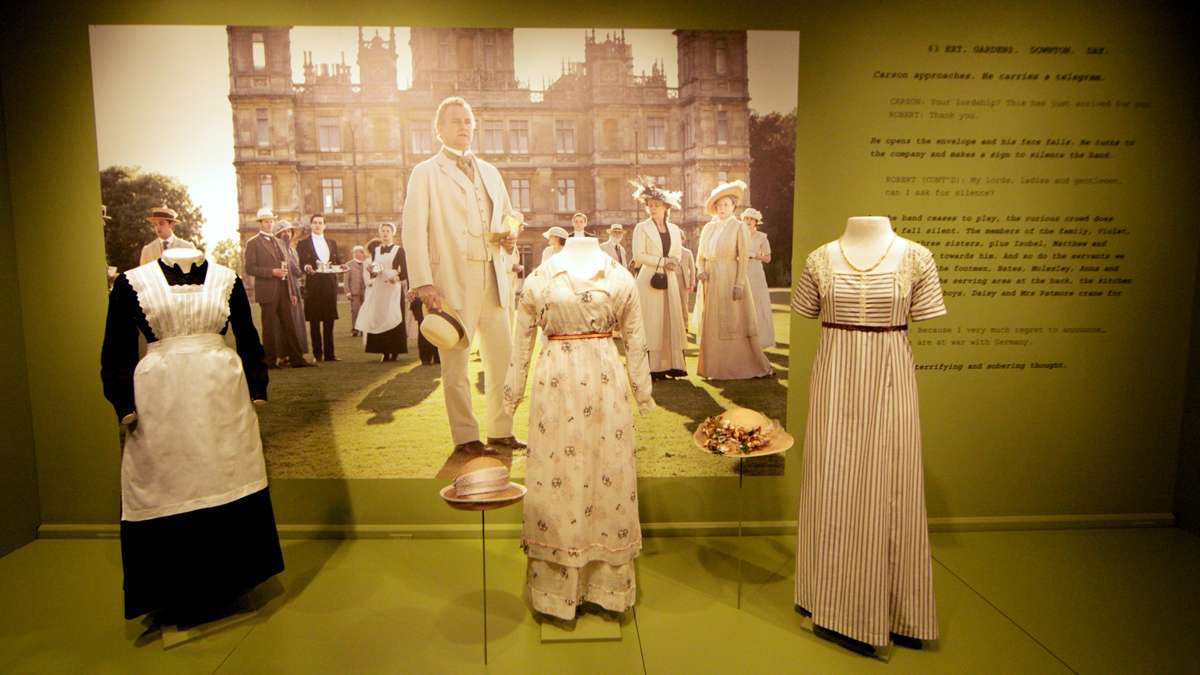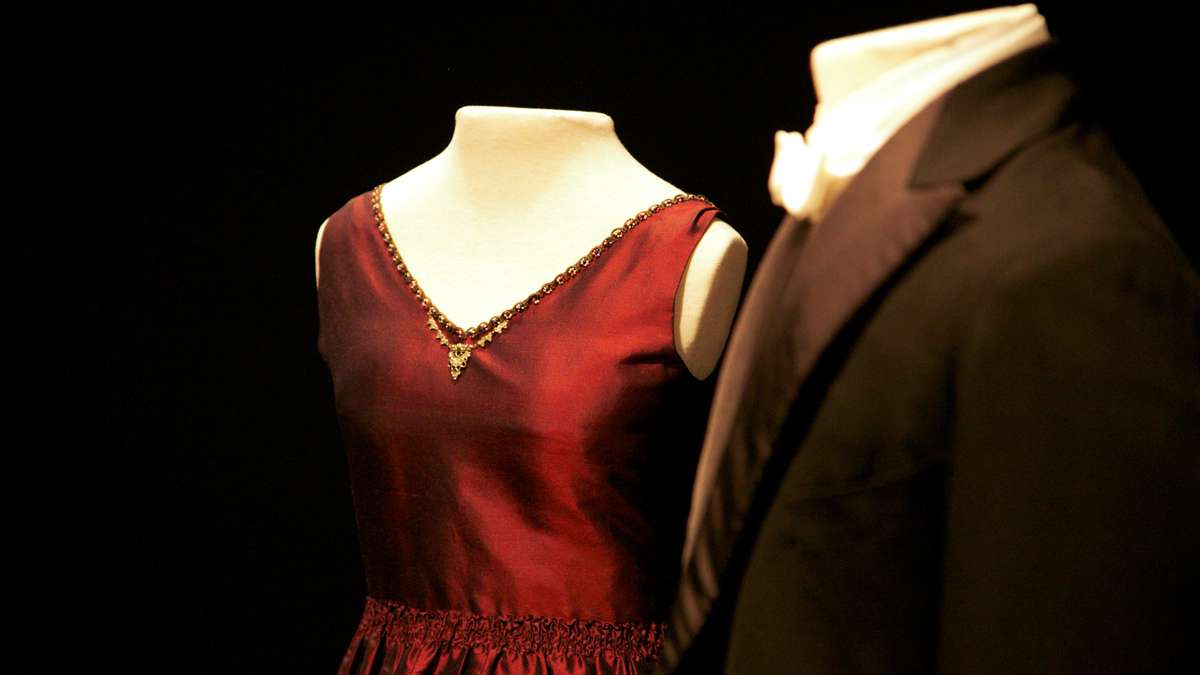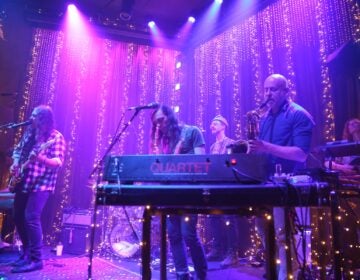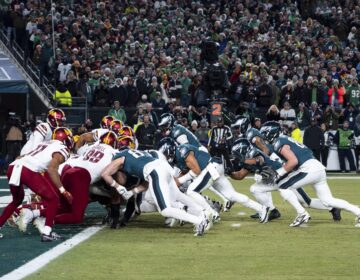Costumers from ‘Downton Abbey’ take victory lap in Delaware
-

-

-

-

-

-

-

-

-

-

Lady Mary Crawley's evening dress and Matthew Crowley's white tie and tails worn during Mathew’s proposal to Lady Mary during Season Two (1916-1919) (Nathaniel Hamilton/for NewsWorks)
-

-

Season four of “Downton Abbey” ended last week, but the clothes live on in Delaware.
The Winterthur historic house and gardens, just outside of Wilmington, is now exhibiting dozens of outfits worn by the Crawleys and their servants, including key outfits: the controversial harem pants Lady Sybil donned to shock and awe; the ostentatious furs worn by Shirley MacLaine, as Martha Levinson; and the burgundy layered dress Lady Mary wore when she accepted Matthew Crawley’s marriage proposal.
Winterthur rented 40 outfits from the costumer of “Downton Abbey,” Cosprop of London, which express social structures of the upper and lower classes, the clash of tradition and modernity, as well as the struggle to maintain the estate in the face of the post-World War I economy.
“As Lady Mary takes on the role of working with Branson as an estate agent, her clothes become more practical,” said co-curator Jeff Groff, Winterthur’s director of public programs. “For Lord Grantham, they are changing the cut of his suits. The big change is going form white tie to dinner, to black tie. Violet [Maggie Smith] is horrified with Lord Grantham in black tie.”
The outfits of the upper classes changed dramatically according to fortune, fashion and occassion, but the clothes of the servants remain pretty much the same. If you look carefully, you can see very subtle changes that show the passing of time.
“Collars may change in size, or not be as rounded, not as rigid — a high collar,” said Groff. “Waistcoats change, but boy, you really have to look carefully. I would not have known if it wasn’t pointed out to me.”
An American country estate
Winterthur paired the outfits with some of the objects and documents from its own archive, to compare the English country house with its counterpart in America. Winterthur was built in 1837 by Jacques Biderman, who married into the DuPont family. The house stayed in the family until 1951 when it was turned into a public museum and garden. It has one of the finest collections of early 20th century Americana.
The collection includes American books of etiquette and social cues.
“In England, you didn’t need to teach people manners. It was ingrained,” said David Roselle, executive director of Winterthur. “They knew things, like, a woman could wear a tiara but only if the affair was white-tie. Not black-tie. That was the highest formality.”
With all the stylish pomp of the upper-class, eye-candy outfits, the exhibition opens humbly with plain servants’ clothes diaplayed in a kitchen. The wall clock is set to 7 a.m., when Mrs. Patmore would begin preparing breakfast.
On the walls, Groff reproduced documents and photographs of Winterthur’s servants, including short biographies of Alice Baxill, the DuPont’s housekeeper in the 1930s, and Winterthur’s first butler, Auguste Dauphin, hired in 1892.
“The word ‘servant’ was not used,” said Roselle. “They were called ‘staff’ and other, much softer words than ‘servant.'”
Comparisons between “Downton Abbey” (shot in the classical Victorian Highclere Castle) and Winterthur only go so far. English estates in the early 20th century were mostly concerned with maintaining the incredibly expensive upkeep, while American country houses were status symbols for wealthy industrialists.
“Even though the great wealth of Philadelphia came from post-Civil War industry, and railroads, everybody wanted to give the appearance of a country gentleman,” said Groff. “You built your country house, but you didn’t make your income from the farm. In England they were relying on rents from tenants; here they consumed more money then they produced.”
“Costumes of Downton Abbey” will be on display at Winterthur until January 2015.
—
This disclosure: Winterthur supports WHYY/NewsWorks.
WHYY is your source for fact-based, in-depth journalism and information. As a nonprofit organization, we rely on financial support from readers like you. Please give today.





